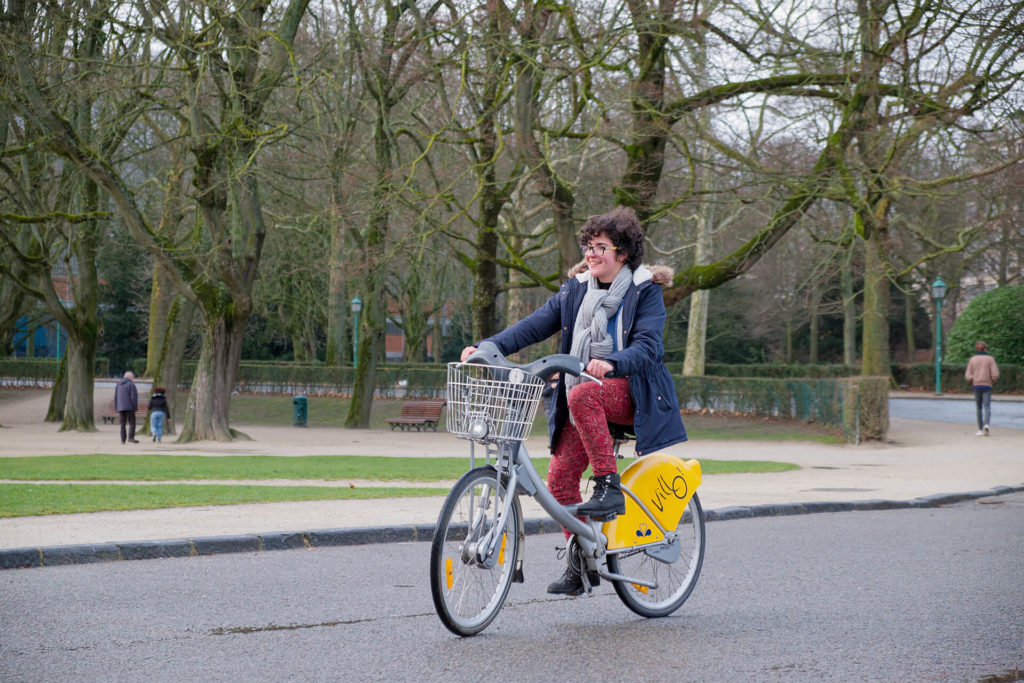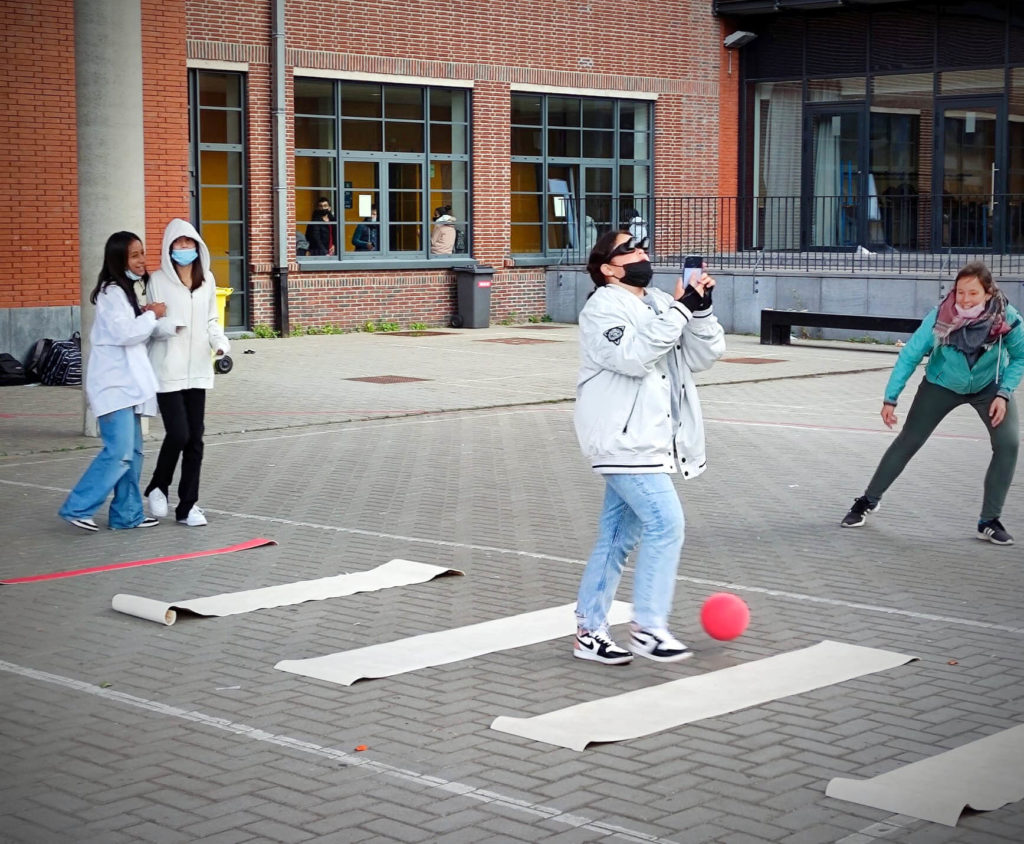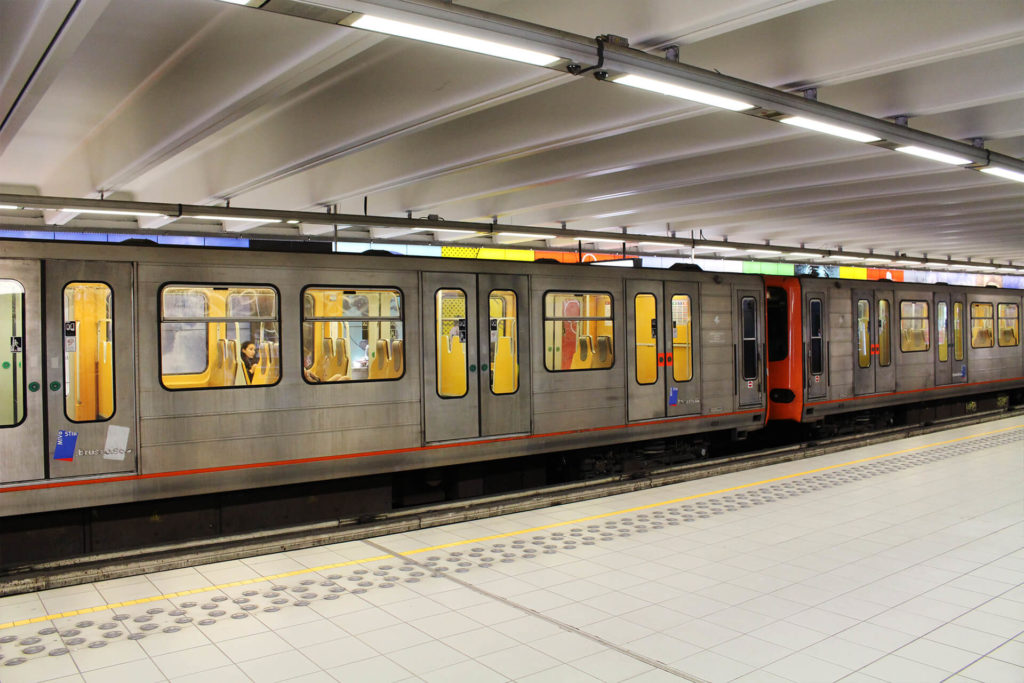Mobility Coaching Empowers Citizens
To improve mobility, infrastructure alone is not enough – engaged citizens are key.
Brussels has a complicated relationship with sustainable mobility. On one hand it has been taking significant steps to improve urban mobility, yet it still struggles in key areas.
A 2021 air quality study conducted by CurieuzenAir across 3000 locations showed Brussels’ air quality to be largely sub-par, revealing 98.6% of the population lives or works at a location exceeding the World Health Organization’s (WHO) threshold value at which health symptoms begin for nitrogen dioxide (NO2).
The research also demonstrates a “clear link” between the socio-economic status of Brussels residents and the air quality at their homes. Areas with a higher population density experience higher NO2 levels while people with a higher income tend to have better air quality at their residences despite having more cars. In 2017, Saint-Josse-ten-Noode had an average income of €9,297 – or half the national average – and also the worst air quality in Brussels. Meanwhile, the commune with the best air quality, Watermael-Boitsfort, had a median income of €23,112.

So many communes, so many rules
Since 2020, a contentious argument has been raging over whether the Bois de la Cambre – a forest just south of Brussels – should allow car traffic. Commuters use the park as an entry point to the city, but some residents argue that they should rely on other key arteries and modes of transport to get in and out of the city. The involvement of various legal and governmental entities, representing a host of different views on the matter, means that the issue is far from settled. Drivers can still access the city through the park, for now.
The lack of uniformity across different areas of Brussels, which is divided into 19 communes, means different governmental bodies, residents, and political stances. As a result, driving or cycling through Anderlecht can be a very different experience from doing so in, Watermael-Boitsfort, although the two are only a few kilometers away from each other.
Measures on the agenda
Conversely, by many other measures the city is making undeniable strides in the direction of a more sustainable model of mobility.
The new mobility plan for the city launched in August 2022 as part of a larger, region-wide program for 2020- 2030 aiming to make the city-center more accessible, livable, and safer. This will be done primarily by cutting down the amount of through-traffic in the area through a combination of new parking regulations, modifications to some one-way roads and the creation of limited-access areas in town for non-local vehicles.

In 2021, the city finished the establishment of a 9-kilometer cycling beltway, known as the ‘little belt’ which encircles the city’s center. This ‘little belt’ goes a long way towards making cycling safer and more accessible in many key areas of the city, which is reflected by the large numbers of citizens using it.
Many people want to move more sustainably; we just need to provide them with the tools and the set of skills that will allow them to do so.
More citizen engagement needed
These large-scale infrastructure changes are commendable and have undeniably contributed to a reduction of car usage in the city; so for this year, the distance traveled by car by the people of Brussels is 49.19%, down from 64.04% in 2017. Yet these changes are not sufficient to create a sustainable model for mobility. An essential, and often undervalued part of the process to create a sustainable mobility model depends on a robust effort to actively engage and educate citizenry on the topics of urban mobility and sustainability.
GoodPlanet has been working to do exactly this – promoting urban mobility in Brussels and raising awareness amongst citizens in the city. It is working in partnership with Bruxelles Mobilité and another non-profit organization, Coren, in the development and implementation of the School Mobility Plan project since 2006.
Every year, 21 interested schools are selected to take part in the project. Then working groups are created within each school, which is typically composed of teachers, interested parents, and the occasional student representative.
Together they set about ‘diagnosing’ the school which involves surveying students and staff about their mobility habits for getting to and from school. This helps to establish a good idea of where people come from, and how they are currently moving around Brussels. The schools’ internal infrastructure is also reviewed, as well as the surrounding infrastructure. This facilitates the identification of what the school can aim to improve, but also what the city or the commune can do to improve the areas near the school.
Out of this rigorous process, several recommendations can be made. From there, an action plan is designed with the working group, where a clearly defined set of actions is laid out for the school to take in the coming year. This action plan is sent to Bruxelles Mobilité, who considers every point of the action plan on its merits. Once the action plans have been validated, Bruxelles Mobilité facilitates the organization of the actions wherever possible, by covering expenses for a variety of different activities, mobility workshops, material acquisition, and infrastructure improvements.

GoodPlanet also helps build bridges between the school and the commune it exists within. If the school wants nearby road or pavement infrastructure to be modified or improved, they can begin a dialogue with the commune.
After working 18 months hand-in-hand with the working group, the school is then responsible for taking the project forward independently, while still benefiting from financial and material assistance from Bruxelles Mobilité.
The value of such a project is clear: School administrators and teachers rarely have the time, resources, energy, or the experience to go about restructuring their school’s mobility plan on their own. By offering in-person coaching over 18 months, as well as a framework that allows them to benefit from substantial support from Bruxelles Mobilité, it facilitates the engagement of a public that is clearly keen and interested. Yet without these working groups, they would otherwise have little other external incentives to change this aspect of their school.
Since the project’s launch in 2006, 490 out of the region’s 725 schools, or 67%, have started a school mobility plan, and currently 250 of those schools are continuing the process by themselves. Schools are clearly invested in changing their mobility over time, but the demand for this project shows that they also largely want to be eased into it and coached on the issue before they feel comfortable doing it on their own.
Fewer cars in the city
In 2022, in an effort to encourage a change in mobility habits, Bruxelles Environment created a new project that provides a financial incentive for people who wish to move away from car dependency. An individual can benefit from 500€ to 900€ depending on their income, for handing in their car. The bonus must then be spent on mobility-related purchases: You can buy a membership to a bike-share scheme, a membership to a car-share scheme, a public transport membership, a multimodal card, or can even use that bonus to buy your own bike. Similar, larger, incentives exist for companies and other such entities too.
To help people find the most fitting solution, Bruxelles Environment also offers free coaching for interested individuals. Anyone can book a video call with a Mobility Coach to discuss their own situation, the nature of their commute, and their mobility habits. The mobility coach can suggest tailored solutions according to each specific situation.
Free Mobility visits can also be organized for groups. People can experience active and shared mobility during a 2 hour walk with a Mobility Coach. Such an experience can be a great way to inspire a change of habit for a company, or even a whole family.

The old axiom ‘build it and they will come,’ while true in some cases, does not apply to vast sections of modern urban society. Simply offering more electric buses and bike lanes won’t create an instant shift of mindset in citizens. The School Mobility Plan in Brussels shows that real citizen engagement in active forms of mobility can be fostered through meaningful dialogue with certain sections of the public. Many people want to move more sustainably, we just need to provide them with the tools and the set of skills that will allow them to do so.
When you incentivize change, and then put in the effort to help people transition to other kinds of mobility, that leads to undeniable positive externalities.
There is nothing appreciatively unique about these projects; these are inherently transferable to other cities. Somewhat strikingly, however, significant mobility projects aimed at schools are not commonplace across European cities, although incentive tools such as those being used by Bruxelles Environment are starting to appear across the European map, albeit slowly.
Defining mobility in Brussels in a single stroke is impossible. Brussels is simultaneously progressing at a rate of knots yet falls short in some respects. Political complexities almost guarantee a lack of uniformity across the area, yet there is a growing engagement with active travel in all corners of the region.
There is one respect where Brussels has got it right: Those in power have understood that you cannot simply rely on investing in infrastructure to improve mobility; you have to actively engage with and educate your citizens as well.
